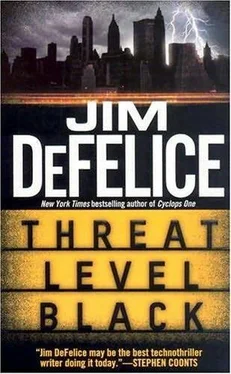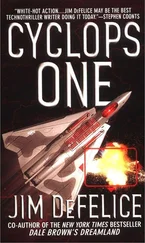3326EE10”
Howe celebrated his decision by walking against a brisk late-winter wind to Washington ’s Chinatown section and having lunch. He even gamely tried eating with chopsticks, though he soon gave that up in favor of tried-and-true Western utensils. After lunch he headed back across the mall to the Smithsonian National Air and Space Museum, studying the World War I-era aircraft and just wandering in general through the vast halls of the museum. A new computer simulation booth had been set up, allowing visitors to practice their skill in simulated World War II dogfights. Howe blasted a Focke-Wulf 190 out of the sky with a Hurricane-no mean feat-but had a much harder time against the V-1 buzz bombs, pilotless terror weapons used by Germany at the end of the war. The trick was to fly next to them, then tip them off course with your wing. Howe gave up his spot to a twelve-year-old after several unsuccessful tries; the kid upended the V-1 on the first try.
The visit to aviation’s past made him feel as if he had let go of his own, and he arrived back at his hotel in good spirits, deciding to have one last meal in town at an expensive restaurant before leaving in the morning. He got into the elevator and held it open for a young mother and her child; the doors had nearly closed when a man in a blue pin-striped suit stuck his hand in, leveraging them back. The man leaned over and punched the button for Howe’s floor-seventeen-even though it was lit.
The child in the elevator looked to be about two. Spit dribbled from his mouth. As his mother bent to wipe it, Howe noticed she wasn’t wearing a wedding ring. For a moment he fantasized about striking up a conversation and inviting her to dinner.
The elevator stopped before he could think of anything to say. Howe reached to hold the door open for her; his gallantry earned him a smile from the woman, but he remained tongue-tied as the doors closed.
“Pretty,” said the other man.
“Oh, yeah,” said Howe.
“Instant family, though. Not for you.”
Howe turned to him.
“My name is Jake Elder. I’m with the Pentagon,” said the man. “Some people with the chief of staff want to talk to you about an aircraft you’re familiar with, and they sent me to get you.”
“What aircraft?” said Howe.
“Actually, I don’t know,” said Elder. “I think the nature of what they want to talk to you about requires compartmentalization. An Army major by the name of Tyler sent me,” added Elder. “He said you’d know him.”
The door to the elevator opened on Howe’s floor. Neither man moved to get out.
“He also said to make sure you knew this was strictly voluntary,” said Elder.
“All right,” Howe said. “Take me to him.”
Tyler met him in the Pentagon lobby, zipping him through security and filling him in as they walked upstairs to a suite of planning rooms.
“We were talking about Korea and your name came up,” said the major. “I thought I’d take a chance that you were still around.”
“I haven’t been in Korea since I was a lieutenant,” said Howe.
“It wasn’t really about your experience there.”
Tyler explained that he was working with a task force developing plans to target various North Korean advanced-weapons development sites in case of a war, facilities that might be difficult to bomb or worthy of study before being destroyed. The task force included CIA, DIA, and intelligence people.
“We’ve been asked to set up something special,” added Tyler. “Something a little complicated, and we have to put a plan together pretty quick.”
“I’ll help if I can,” said Howe.
A group of planners and intelligence experts, some in military uniform and some in civilian dress, were working in a large conference room Tyler led him to. Most had laptops open and sat around a pair of large round conference tables pushed awkwardly together, a large map at the center. The map was of North Korea. There were satellite photos and diagrams of a small airstrip known as Pong Yan and an adjacent installation.
“We want to pick someone up from this base,” said Tyler. “It’s in the northwest, fairly isolated, but a good distance from the coast.”
“And where does Cyclops come in?” asked Howe.
“Cyclops?”
“The airborne laser. That’s why I’m here, right? Because I helped develop it?”
“Not exactly,” said Tyler. “Let me explain.”
Their “target” was currently at the base, but had said he could make it to the airstrip. Two plans had been worked out. Both involved infiltrating Special Operations forces into the area. The first called for a force of two A teams-twenty-four men-to land at a point roughly fifty miles to the northwest. They would proceed overland-basically across mountains-meet the man at a prearranged spot near the camp, and then go back. The drawback was the fifty-mile trip: It was anything but an easy march, and while the soldiers could be expected to make it, the target was unlikely to be in very good shape.
“We’d probably end up carrying him out on a litter,” said Tyler, still speaking as if he led a Special Forces A team, which as a major he would not.
“Why don’t you use the airstrip?” asked Howe.
“That would be easier, but the goal is to make the rescue completely covert,” Tyler explained. He pointed at the map. “We don’t want the Koreans to know anything. And the problem here is that there are radars in this area that would catch anything approaching, and a barracks here and here. They would hear an aircraft or a helicopter.”
And possibly shoot it down, Howe realized, though Tyler didn’t say that.
“What about a Korean plane?” asked Howe.
“That’s plan two,” said Tyler. “Though there are some problems with it.”
Problem one was the fact that Korean aircraft were always strictly accounted for, and one suddenly appearing overhead would instantly arouse suspicions. Problem two was that the field at Pong Yan was short, which limited the aircraft that could land-and, more importantly, take off-there. What they needed was an airplane that belonged there, with reasonable range to get in and out while still operating on a short strip. At the same time it would be nice if it had decent speed and maybe the ability to defend itself against Korean SAMs and MiGs.
“Like a Korean cross between an MC-130 and an F- 22,” said one of the civilian analysts.
“If you find a plane like that,” said Howe, “let me know.”
“Actually, NADT has something that might be useful,” said the man. “And it happens to look like a Russian aircraft that’s been operating over the country.”
The Berkut, thought Howe, finally understanding why they had called him.
“We’d still have people on the ground,” Tyler told him. “The team would go in and be prepared to secure the area if anything went wrong.”
“I don’t know if that plane can land there,” said Howe, leaning over the satellite photo.
“The engineers say it can.”
“NADT made it available?” Howe asked.
“That won’t be a problem,” said one of the civilians.
The Berkut was the NADT-built S-37/B, the two-seat American version of the Russian-made S-37 Sukhoi Howe had seen tarped in the hangar the other day. The American knockoff had several advantages over the real S-37, most notably in its payload and range, which could be extended with fuel tanks and an in-air refueling. Even so, the craft would have just enough fuel to make it from Japan, touch down, and then get out over the Sea of Japan for a refuel.
It had some drawbacks compared to the real thing, which was still in development. The American S-37/B was fitted with a Russian 30mm GSh-301 cannon, the same weapon used in the Sukhoi Su-27 series the original type was based on. This was a decent weapon, though of use only in a very short-range engagement. Because it had been built primarily to gain information about the Russian model’s capabilities, the NADT plane had only two working hard points, or spots where missiles or bombs could be attached. These points had also been plumbed for drop tanks-and would have to be used to complete the mission. Which meant it would be flying for a long time over hostile territory without much of a defense.
Читать дальше












